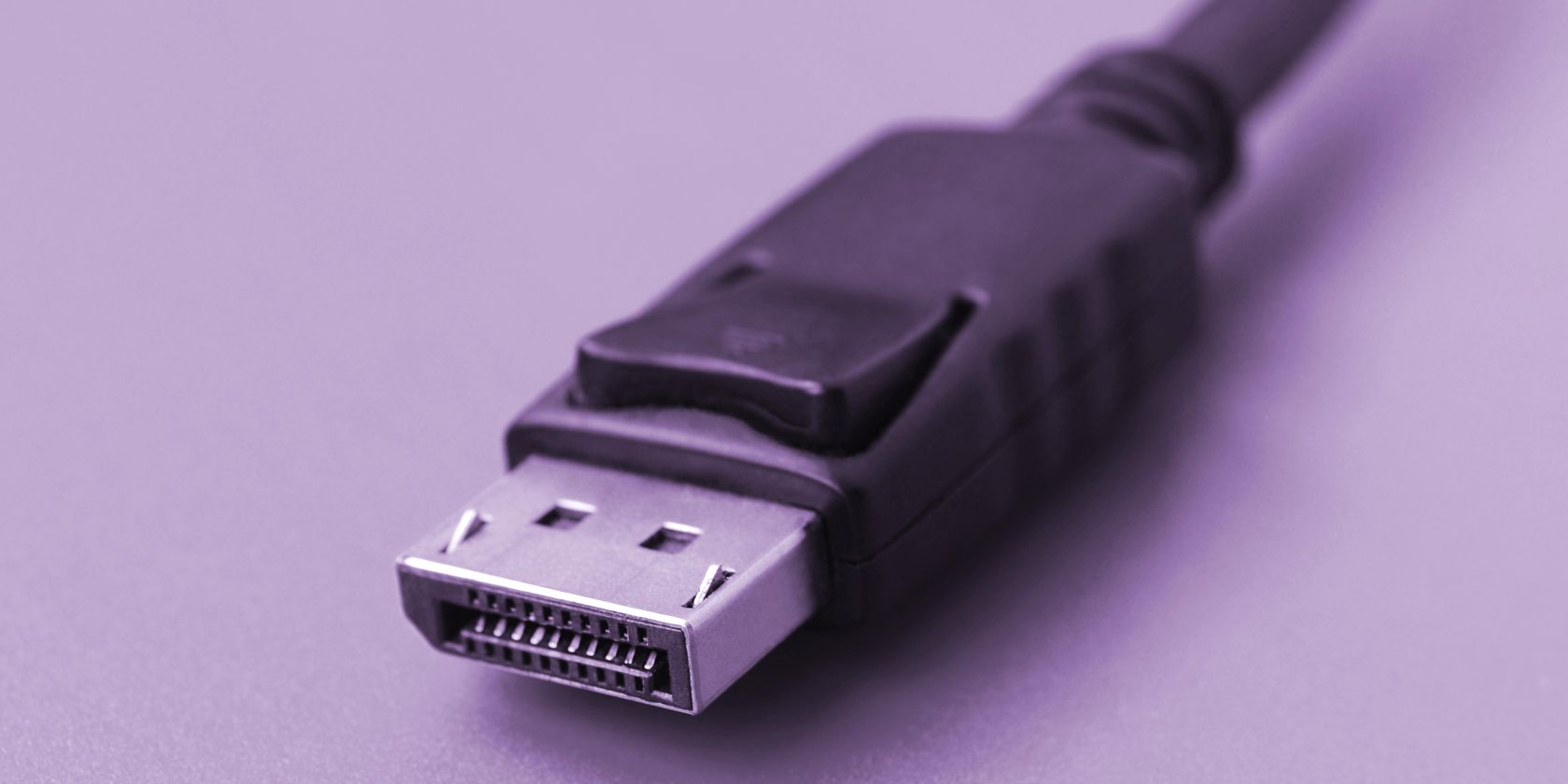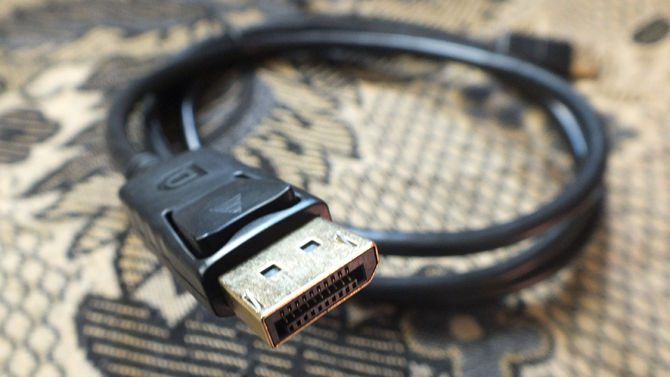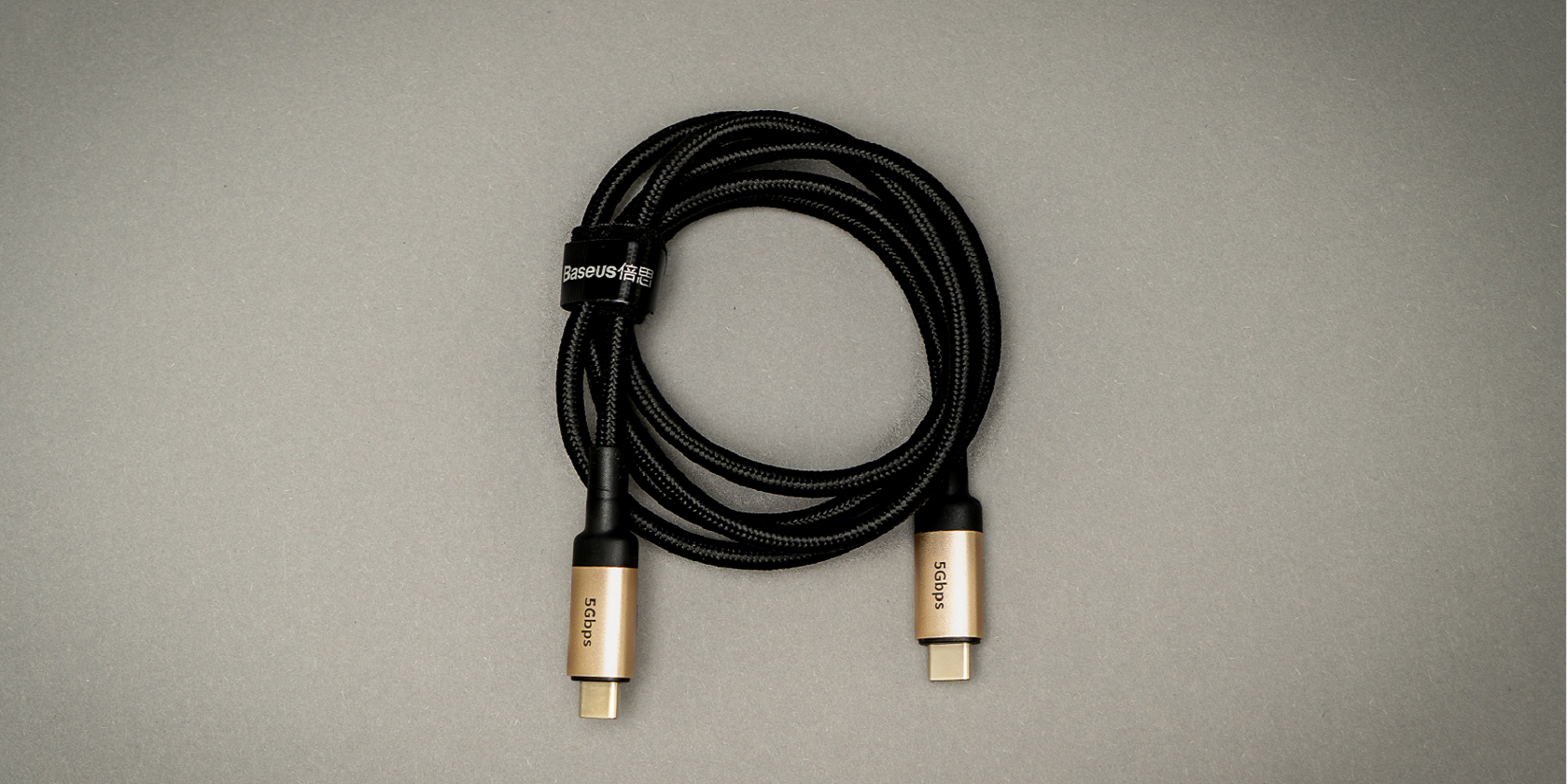So you finally bought a new monitor. It's capable of heaps of cool things—it has a 240Hz display, 4K resolution, and it's compatible with the variable refresh rate tech in your GPU. One small problem, though. To drive it to its fullest, while you can use that same old HDMI cable, it's time you go the full mile and shop for a new DisplayPort cable.
There are a lot of things you need to take into account when you're buying a DisplayPort cable. After all, you can't just buy the first one you see. So you might be wondering now: how do you actually choose a DisplayPort?
Take Your DisplayPort Cables Specs Into Consideration
The very first thing you need to analyze is what specs you can work with and buy a cable based on that. Check if your new monitor supports DisplayPort 1.4a, 1.4, or an older version of the standard. DisplayPort 2.0 is relatively recent (launched in 2019), but at the time of writing, no DisplayPort 2.0 monitors are available on the market. DisplayPort 2.0 cables are available on the market, but unless you plan on using them with a new monitor down the road, it's not worthwhile to get one right now.
While you're at it, check what DisplayPort version your display output supports. Unfortunately, you can't check that on CPU-Z or the like, so you'll have to complete an internet search for your specific monitor and your GPU and see what version both support. However, chances are that if it's a recently released monitor, it's compatible with DisplayPort 1.4a or 1.4, so those are the ones you probably need to look for.
One thing we need to note here is that DisplayPort versions are compatible with one another, so if you buy a cable with the wrong version, or the DisplayPort versions between your output and your monitor aren't the same, it's not the end of the world. The signal will be passed at the lowest compatible version, but your monitor will work. You can even use a DisplayPort 2.0 cable on your monitor, but as we said before, that's probably not a good idea right now, as it'll pass a 1.4a/1.4 signal.
And while you're checking both, also check the actual port. Is it an actual DisplayPort, or do you see a smaller USB-C connector? Some newer devices, especially if they're higher-end, might actually come with a USB-C connector alongside, or replace, a DisplayPort. It still carries over a video signal, though, so don't let that confuse you.
What Is Thunderbolt? Is It Better Than DisplayPort?
In your cable search, you might occasionally see the word "Thunderbolt" floating around. But should you care about it? We've explained Thunderbolt in detail in the past, but basically, Thunderbolt is a technology that can carry both DisplayPort and PCI Express. Whether you should care about it, though, the answer is probably not.
Thunderbolt can carry DisplayPort, but Thunderbolt also allows for connecting things like docking stations and hard drive enclosures.
It's basically a USB-C cable on steroids. For some people carrying a lot of peripherals, it comes in handy because Thunderbolt wants to be the last cable you'll ever need for everything. For connecting a display, though? You don't need all that. You're not going to be plugging it out of your computer frequently, and the cable will likely just sit hanging off your desk for an indefinite period.
And even putting that aside, you probably can't even use it. Graphics cards from Nvidia and AMD don't support Thunderbolt, and if your PC is AMD (or a lower-end Intel), chances are it's not even supported by your system in the first place. Some Intel motherboards do have a rear Thunderbolt port, but the vast majority of PCs don't.
Thunderbolt is great otherwise. But if you see a Thunderbolt cable, you should steer clear of it in your specific use case.
How to Choose a DisplayPort Cable
Now that you know the DisplayPort version supported by both your monitor and your GPU, the actual connector, and you know that Thunderbolt isn't worth your time (and neither is DisplayPort 2.0) it's time to get searching. You need to consider a few things about the actual cable you're buying, too, other than just the cable spec.
For one, you should check the quality of the cable you're buying. You don't necessarily need to buy a premium cable that goes all in with braided sleeves and a copper connector, but you should buy a cable that works properly with what you want to use. You should largely steer clear of no-name brands and check the reviews for whatever you're buying. Check for disproportionate negative-to-positive review ratio, frequent complaints in the negative reviews, and if positive reviews look bought or otherwise fake.
On that note, be sure to buy a VESA-certified cable. VESA, or Video Electronics Standards Association, is the standards organization that develops the DisplayPort standard, and having a certified cable ensures that your signal is being transferred within the appropriate specifications and that you won't get a subpar experience. All DisplayPort cables that have been certified need to support, for one, HBR2 (High Bit Rate 2), which can support 4K at 60Hz or up to four 1080p screens using multi-stream. You shouldn't buy a non-certified cable to save a buck—if it's not certified, it's because it's likely low-quality, and if the non-certification isn't a problem, other things probably will be.
Also, make sure you check the length of the cable. Most cables are around ten feet, but you can buy almost any length of DisplayPort cable you desire. However, it's probably a good idea to check how much slack you need and buy your cable based on that. Which begs the question: what is the best DisplayPort cable?
Make a Smart Purchase
There are lots of factors that you need to consider when you're buying a cable. Amazon is littered with cables from both off-brand makers, but a few high-quality ones pop up every so often.
Hopefully, with this advice, you can now make a more educated purchase and get yourself a high-quality DisplayPort cable.



